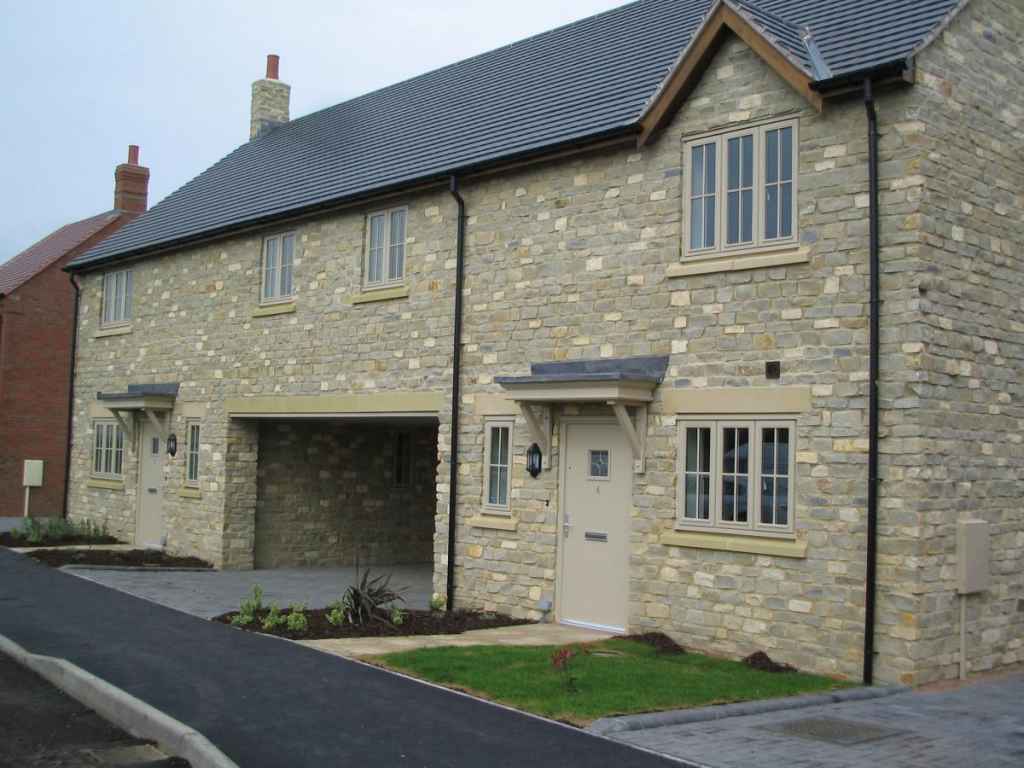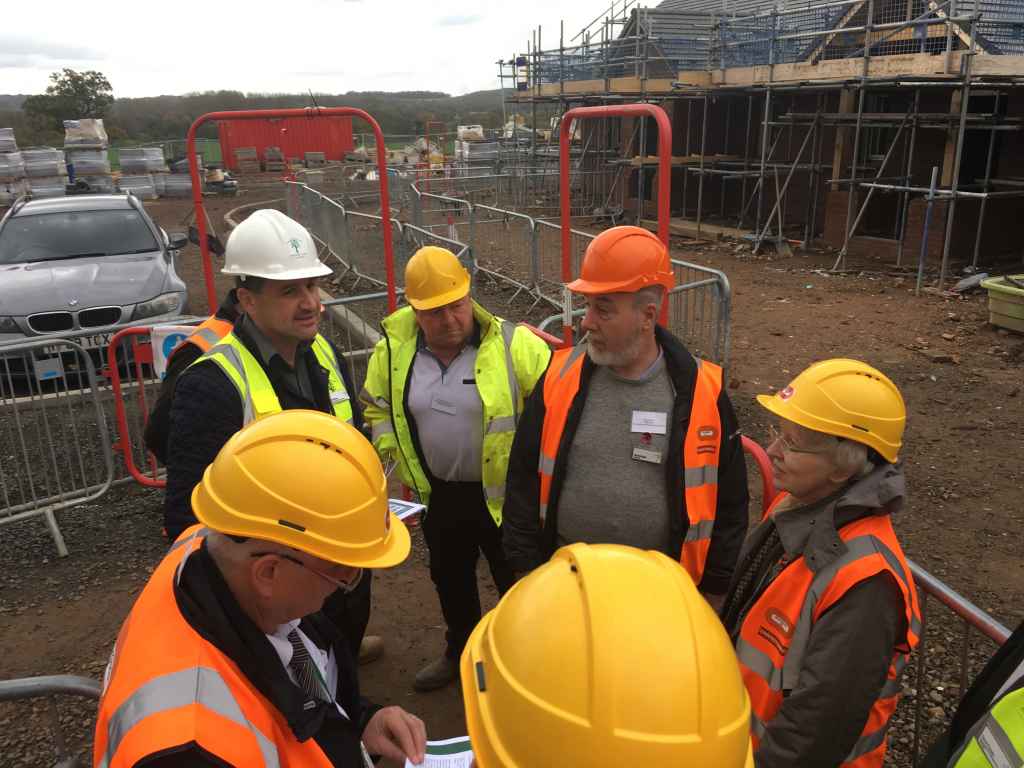Affordable Housing
Finding out what you can do… and how to do it
It can be difficult to know where to start when seeking affordable housing for your community. Ten steps to delivering affordable homes on a Rural Exception Site will help you understand the process you need to go through – which will be very similar whichever rural area you live in. You might also consider community led housing which can, for example, deliver housing through a Community Land Trust.
Community Led Planning (CLP) is another way that everyone can participate in the running and growth of rural communities.
This list of completed affordable housing schemes (Sept2022) shows some of the local connection rural schemes that have been developed as a result of the work of the Rural Housing Enabler. And these case studies provide more information.
What is affordable housing?
It is housing provided for people on lower incomes who are unable to meet their housing needs in the general housing market. Affordable rented housing is usually owned by a housing association and rented at a rate affordable to people on low incomes.
Shared ownership homes are partly purchased by the resident and partly owned by a housing association. You pay rent on the part owned by the housing association. Housing associations can provide the housing at an affordable cost as they often receive funding towards the development costs.
What are the benefits of rural affordable housing?
Affordable housing can make a huge contribution to a rural parish as it not only meets the housing needs of local people but can help maintain local services and amenities, such as a local school or village shop. It may also help maintain the social balance and social networks within the parish.
How does shared ownership work?
Shared ownership housing allows residents to part own and part rent their home. A deposit and mortgage is required for the share to be purchased, and subsidised rent is paid on the remaining share. Rural shared ownership homes are retained for local people as outright purchase is not permitted.
What is a Section 106 Agreement?
A Section 106 Agreement is a list of planning conditions that must be fulfilled by a developer. For rural schemes the Section 106 Agreement will include clauses to prioritise the homes for local people and keep them affordable in perpetuity.
Where can affordable housing be located?
Most affordable housing developed in rural parishes is located on Rural Exception Sites. These are sites within or adjacent to the boundary of a settlement where market housing would not normally be acceptable. Residential development is permitted on these sites as an exception to planning policy though all the usual planning criteria must be met. The housing must be affordable for local people and remain so in perpetuity. All potential sites within and around a settlement are considered in order to find the best site. Developing an Exception Site does not set a precedent for other building.
Is there a minimum size for an affordable housing scheme?
An affordable housing scheme needs to be affordable to the occupiers so the build costs must be reasonable. This can usually only be achieved through economies of scale with at least five homes being built at one time. It may be possible to have a larger scheme split between two sites but the viability of this will depend on the nature of the sites and any required infrastructure works.
How much will be paid for the land?
Exception Sites have a unique land value that is between agricultural values and ‘hope’ value. The price agreed for the land is important to ensure that the housing will be affordable. There is a consistent approach to Exception Site land values to ensure that rural housing schemes are viable and affordable, and this is generally in the region of £10,000 per plot dependant upon site constraints.
How long before the homes are built?
There are many stages in developing an affordable housing scheme, and the housing needs survey is just the start. Each community and each site is different and any number of factors can influence the timescales including the number of plots, how much infrastructure work is required, and the unique surrounding environment. Typically a local needs affordable scheme could take in the region of five years to bring forward.
How many and what type of affordable housing will be built?
Local evidence, including a housing needs survey and information from the housing waiting list, will indicate the number and type of affordable homes that are required. A proposal is drawn up individually for each parish, and in conjunction with the parish council and landowner, to satisfy some or all of the identified local need. In some circumstances local market housing can also be provided. Housing association homes are built to Lifetime Homes Standards and are carefully designed to fit in with nearby homes.
Will the new homes go to local people?
The homes are allocated through the local Borough / District Council housing waiting list and the relevant housing association. Applicants who have expressed an interest in the new homes must have a local connection. The Section 106 Agreement ensures that people with a local connection have priority and this is legally binding. Verification of local connection, as set out by the local authority, is undertaken by the housing association. If potential residents cannot be found within the immediate parish the homes will be offered to people from immediately neighbouring parishes. Each local authority will have its own arrangements. The Section 106 Agreement ensures that all future lettings and/or sales have to meet the same local connection criteria as when the homes were first built. It is important that the parish council understands the nomination process to be able to advise local people but neither the parish council or landowner are involved in the selection process.
What is a local connection?
Each local authority will have its own definition of ‘local connection’, which may include some of the following:
- currently resident in the parish
- previously resident in the parish
- currently employed in the parish (minimum hours may apply)
- to give support to or receive support from a family member or dependent who currently resides in the parish
- born in the parish
Certain time periods may apply to some of the criteria.
Can affordable homes be built on greenfield sites?
There are planning regulations in place to allow greenfield development under certain circumstances and providing the following criteria are in place:
- the parish council supports the development
- it will be kept affordable for local people in perpetuity
- it is supported by up-to-date evidence, such as a housing needs survey
Even if these criteria are in place the planning application will be subject to approval from planners in a number of other ways, including highways, utilities, ecology, archaeology and impact on open countryside.
Will the parish have to fund the survey or an affordable homes scheme?
Most communities won’t need to pay for the survey, though they will be responsible for delivering the survey packs across the parish (which could be delivered alongside a parish newsletter or similar). The parish is not required to make a financial contribution to the scheme although some choose to donate land or sell it at a reduced rate.
Why is a housing needs survey required when there is already a housing waiting list?
The local authority housing waiting list only registers households looking for properties to rent whereas a housing needs survey considers all tenures of housing, from rent through to self-build. Many people who live in rural areas believe that affordable housing will never be built in their area so don’t apply to the local housing waiting list. A survey is also an opportunity to raise the issue of housing with the local community and may help in land coming forward.
What is involved in undertaking a housing needs survey?
The Rural Housing Enabler works with the local parish or town council to undertake a survey to establish the unique needs of that particular rural community. A standard questionnaire is used in order to ensure the robust validity of the results and is delivered to every home across the parish. A Freepost envelope makes it easy to return the completed survey form directly and confidentially to the Enabler, or the survey can be completed online. Survey returns are analysed and an anonymised report provided to the parish/town council. Returned survey forms are kept securely for a short period before being shredded.



